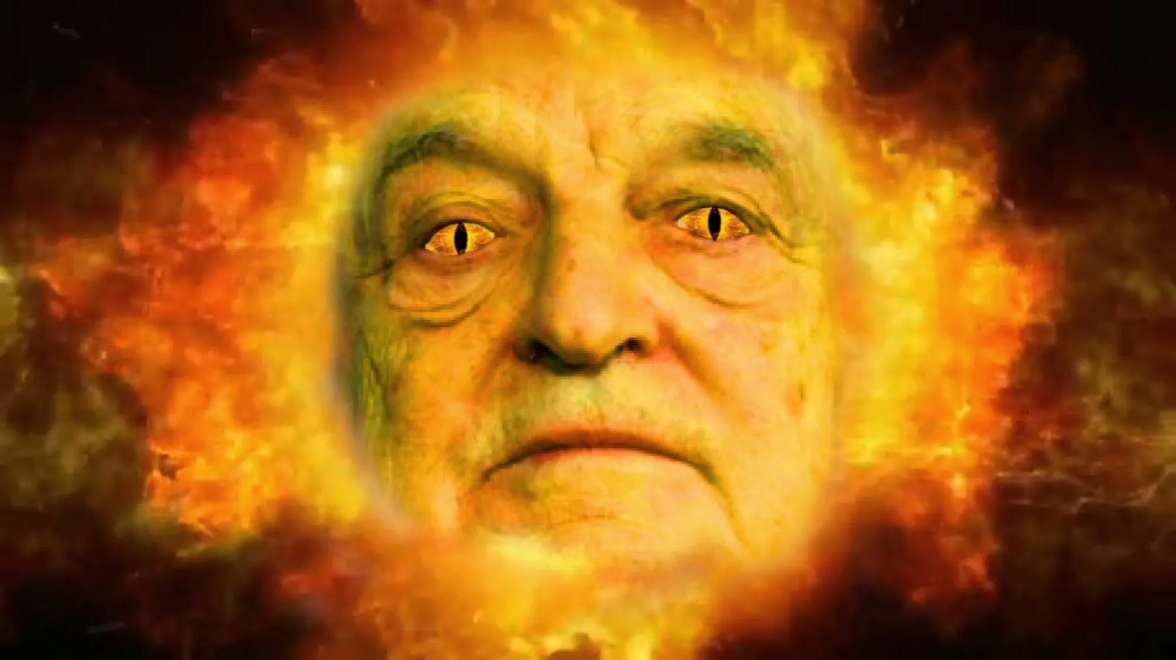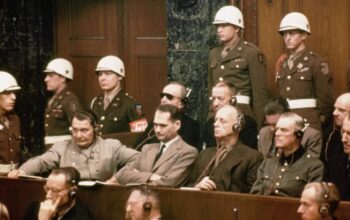In the vast tapestry of history, certain individuals stand out as enigmatic figures whose actions weave intricate patterns that both intrigue and confound. George Soros, a name that often conjures up images of a financial titan and philanthropic trailblazer, is one such individual. Yet, as we dig into the labyrinthine corridors of his past and present, a darker thread emerges – one that raises questions about his motivations, methods, and the shadowy designs that seem to underlie his every move.
Origins in Shadows
As the old adage goes, the past has a way of catching up with us, and in the case of George Soros, his early life casts a troubling shadow over his later successes. Born in Hungary in 1930, his formative years were marked by the turmoil of World War II and the sinister rise of Nazi ideology. While Soros has regularly downplayed this period, describing himself as a mere spectator to history’s horrors, a more probing examination reveals a deeply unsettling connection. Soros, then a teenager, was known to have been employed by a Hungarian official charged with the task of confiscating Jewish property. This disturbing association has raised eyebrows and prompted uncomfortable questions about his role in those dark days.
Wealth Accumulation: A Mysterious Alchemy
George Soros’ journey from a war-torn Europe to the upper echelons of global finance seems like a tale plucked from the pages of a rags-to-riches novel. But as the ink of his life story dries, some have questioned the alchemical process that transformed him into a billionaire. His hedge fund, Soros Fund Management, has generated astronomical gains over the years, earning him a place among the world’s richest. However, critics contend that his financial success might not be as innocently wrought as it appears.
Accusations of market manipulation and predatory practices have often been leveled against Soros. The most notorious episode occurred in 1992, when he infamously shorted the British pound, forcing its withdrawal from the European Exchange Rate Mechanism and making a billion-dollar profit in the process. This move, which led to a financial crisis in the UK, painted him as a shadowy figure capable of wielding immense power over economies. It’s worth pondering whether such an approach to wealth acquisition raises ethical concerns and casts doubt on his altruistic facade.
Puppeteer of Politicians
Power, they say, is the ultimate aphrodisiac, and George Soros seems to have an uncanny ability to attract and influence politicians. His Open Society Foundations, ostensibly dedicated to promoting “democracy”, human rights, and freedom of expression, have been instrumental in shaping political landscapes around the world. Critics argue that this influence goes beyond the boundaries of transparency and democratic norms.
One glaring example is his involvement in Ukraine’s Orange Revolution in 2004 and subsequent Maidan protests in 2014. Soros-backed organizations played a pivotal role in these movements, leading to the overthrow of governments. While he championed these as triumphs of democracy, skeptics saw a web of manipulation aimed at advancing his own interests under the guise of promoting freedom.
The Color of Revolutions: Orchestrating Chaos
The phenomenon of “color revolutions,” characterized by seemingly spontaneous uprisings that lead to regime changes, has become synonymous with George Soros’ name. From Georgia to Kyrgyzstan, his influence has been felt across various nations undergoing political upheaval. While the promise of democracy and progress may be the banner under which these movements march, one cannot help but question the orchestration behind the scenes.
Soros’ manipulations and covert support for these revolutions could destabilize nations and create power vacuums, potentially plunging countries into chaos. The aftermath of such events often leaves societies grappling with uncertainty, making it essential to scrutinize whether the seeds of these revolutions serve a genuine desire for democracy or a hidden agenda.
Migration: A Trojan Horse?
In recent years, the world has been grappling with the challenges posed by mass migration. George Soros has advocated for open borders and has even proposed that Europe should accept over a million refugees annually. While this stance is hailed by some as a humanitarian gesture, others view it as a Trojan horse concealing broader geopolitical ambitions.
The notion of a one-world global government, often seen as a utopian ideal, takes on a darker hue when seen through the lens of orchestrated mass migration. Critics fear that Soros’ vision of an interconnected world might involve the erosion of national identities and the consolidation of power in the hands of unelected elites. This interpretation raises concerns about the potential consequences of his actions on the cultural and social fabric of nations.
Final Thoughts
As we draw the curtains on the mysterious figure that is George Soros, a disconcerting truth emerges from the depths of his intricate web of influence. The story of Soros, often painted with strokes of wealth, power, and philanthropy, reveals a darker underbelly that defies easy categorization.
In the corridors of history, figures like Soros have a way of carving out a niche that defies traditional hero-villain classifications. While his life journey spans continents and decades, what remains etched in the mind is a narrative that doesn’t fit neatly into the pages of a fairy tale. His wealth, amassed through means that invite ethical skepticism, becomes a symbol of ambition veering into the treacherous terrain of manipulation.
Soros’ political maneuverings and his orchestration of events for personal gain give rise to an unsettling revelation about the extent of his influence. Beneath the surface of his philanthropic facade lies a master puppeteer, tugging at the strings of governments and revolutions, leaving chaos and uncertainty in his wake. The image of a benevolent champion of open societies fades into the shadows, replaced by a specter of calculated intent.
The concept of a one-world global government, once a utopian ideal, now resonates with ominous undertones. Soros’ advocacy for unchecked migration stands as a testament to the potential dangers of his grand vision. As nations grapple with the consequences of uprooted cultures and destabilized societies, his vision takes on a more sinister hue, raising the specter of a future shaped by secret designs.
As we contemplate the paradox of George Soros, a man of complexity and contradiction, we confront the haunting realization that his legacy may not be one of unadulterated benevolence. The tapestry he has woven is woven with strands of light and darkness, leaving us with a narrative that lingers in the shadows—a narrative that beckons us to ponder the thin line between power and manipulation, altruism and self-interest.
The mystery of George Soros endures, casting a long and unsettling shadow across the landscape of history. As time marches on, the truth may remain just beyond our grasp, obscured by the intricacies of human ambition and the mysteries that shroud the actions of those who wield power in the gloom.



